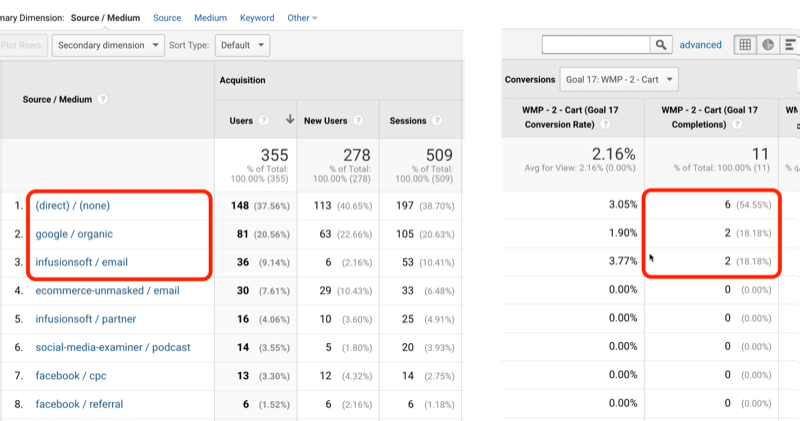Learn What Data Is Google Analytics Goals Unable to Track
Learn What Data Is Google Analytics Goals Unable to Track
Blog Article
Demystifying Google Analytics Limitations: Uncover What Data Goals Can not Track
In the world of digital analytics, Google Analytics stands as an effective device that provides valuable understandings into website performance and individual behavior. Nonetheless, amidst its abilities, there exist limitations that commonly go unnoticed. Understanding what Google Analytics can not track is crucial for a thorough grasp of information interpretation and decision-making procedures. From the complexities of user communication with dynamic web content to the complexities of cross-device individual trips, these restrictions dropped light on locations that might stay covered from conventional analytics point of views. By unwinding these restraints, a more clear photo emerges, allowing for even more enlightened techniques and improved understandings into user engagement and conversions.

User Interaction With Dynamic Material
User communication with vibrant material plays a crucial role in recognizing individual behavior on internet sites and maximizing the overall user experience. By tracking individual communications with vibrant web content, site proprietors can gain beneficial insights into user involvement, choices, and behaviors - what data is google analytics goals unable to track.
Google Analytics supplies various devices to track individual communications with vibrant web content, such as event tracking and online pageviews. Occasion tracking permits you to keep an eye on specific user activities, like clicking a button or viewing a video clip, offering data on how users interact with vibrant aspects.
Cross-Device Customer Journeys
Just how can modern-day analytics tools track the complex courses users take across several tools in their on-line journeys? Cross-device user journeys provide a substantial difficulty for monitoring and evaluating user habits properly. As customers engage with web sites or apps using numerous devices such as desktop computers, mobile phones, and tablets, it becomes important to comprehend how they move between these systems to optimize user experience efficiently.
Google Analytics deals with limitations in tracking cross-device customer trips because of personal privacy concerns and technical constraints - what data is google analytics goals unable to track. While it can offer understandings into specific tools' interactions, tracking a smooth user journey across several devices remains a challenge. This limitation can lead to incomplete data and fragmented user understandings, making it challenging for companies to produce a unified view of the customer journey
To resolve this problem, services can make use of advanced analytics devices that use cross-device tracking capacities, allowing them to gain a much more alternative understanding of individual behavior. By leveraging these devices, organizations can connect the gap in tracking cross-device individual journeys and optimize their electronic approaches for a seamless user experience.
Offline Conversions and Acknowledgment
As businesses navigate the obstacles of tracking cross-device individual trips, another crucial facet to take into consideration is the realm of offline conversions and acknowledgment in the world of data analytics. While Google Analytics gives beneficial insights into on-line user actions, it drops short when it concerns tracking conversions that take place offline. This limitation positions a substantial difficulty for services that have both online and offline sales channels.
Offline conversions, such as acquisitions made in physical shops explanation or through call centers, are vital to comprehending the full customer journey. Without the capability to attribute these offline conversions to details online interactions, companies may battle to properly measure the impact of their digital marketing initiatives.
To address this space, businesses can explore different options such as incorporating CRM systems with online analytics tools or using distinct promotion codes that can be traced back to online projects. By linking the gap in between online and offline information, companies can get a much more thorough understanding of their clients' habits and improve their overall marketing methods.
Individual Individual Recognition
In the realm of information analytics, the ability to accurately identify individual customers throughout numerous on-line touchpoints is a crucial challenge for businesses seeking to individualize and enhance their marketing techniques. While Google Analytics gives beneficial insights right into individual behavior and interactions, it drops short in making it possible for the recognition of details people due to personal privacy concerns and technological constraints. Google Analytics makes use of special identifiers such as cookies to track customer sessions and habits, but these do not equate to determining private customers in a personal sense.

Data From Secure Pages
In spite of the enhancing occurrence of safe pages on websites, obtaining information from these encrypted sources presents a distinct difficulty for digital analytics platforms like Google Analytics. Secure pages, shown by HTTPS in the link, encrypt information exchanged in between the user's internet browser and the web site's server to guarantee personal privacy and protection. While this look at here file encryption is important for protecting delicate information, it likewise postures limitations for tracking customer habits and gathering analytics data.
Google Analytics encounters barriers in collecting thorough details from secure web pages as a result of the security procedures in position. As a result, particular data points such as referral resources, keyword searches, and also some customer communications may not be totally captured when individuals access a site via a secure connection. This limitation can affect the accuracy and efficiency of the data analysis, causing gaps in comprehending user actions and choices on safe pages.
To navigate this obstacle, electronic analysts may require to explore alternative monitoring techniques or take advantage of various other tools particularly designed to gather understandings from secure web pages. By adjusting strategies to suit these restrictions, businesses can still obtain beneficial analytics in spite of the restraints offered by encrypted links.
Verdict
In verdict, Google Analytics has limitations in tracking individual interaction with dynamic web content, cross-device customer journeys, offline conversions, private user get more identification, and information from protected web pages. Despite its useful insights, Google Analytics might not give a total photo of individual interaction throughout different touchpoints.
User interaction with vibrant content plays a vital function in understanding customer actions on web sites and maximizing the general customer experience. By tracking user communications with vibrant material, site proprietors can gain valuable insights into user involvement, choices, and behaviors.
Google Analytics utilizes distinct identifiers such as cookies to track individual sessions and behavior, however these do not correspond to determining individual users in an individual feeling.
As a result, certain data factors such as referral sources, keyword searches, and also some individual communications may not be fully caught when users access a website via a protected link.In final thought, Google Analytics has constraints in tracking individual communication with dynamic content, cross-device customer trips, offline conversions, specific user identification, and data from safe pages.
Report this page